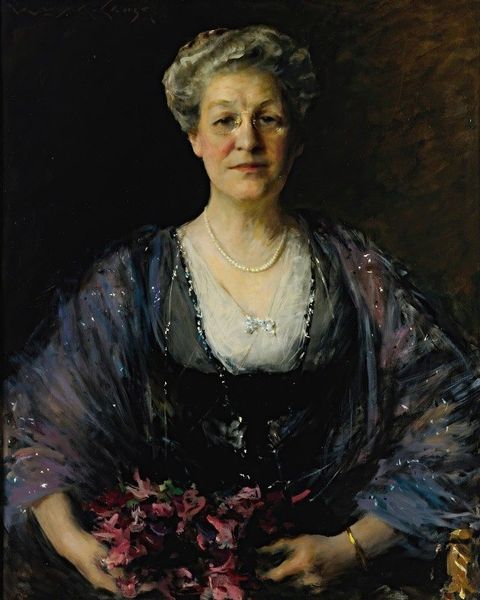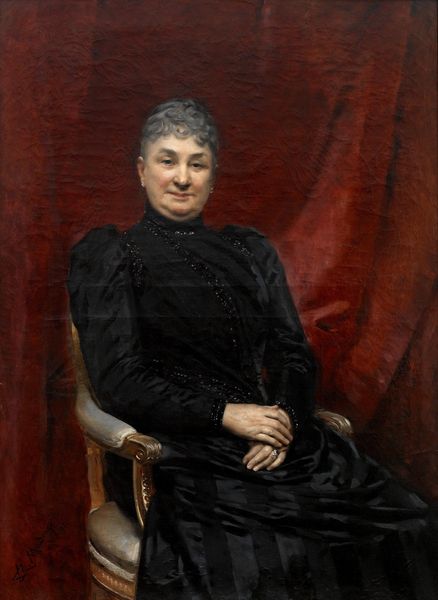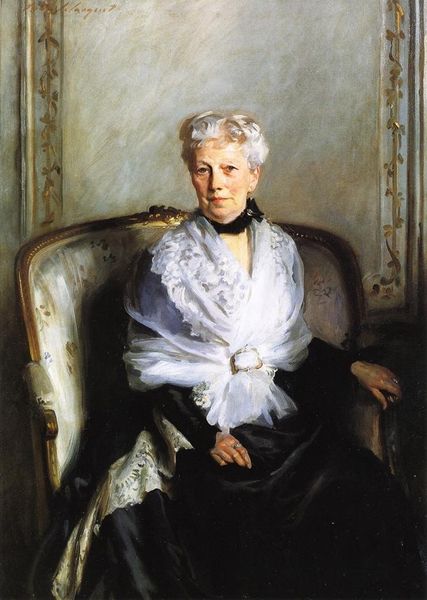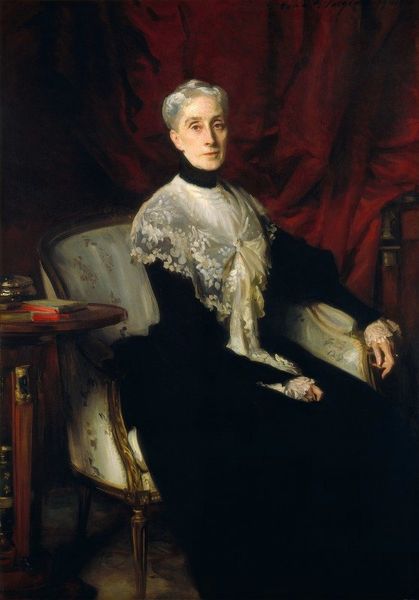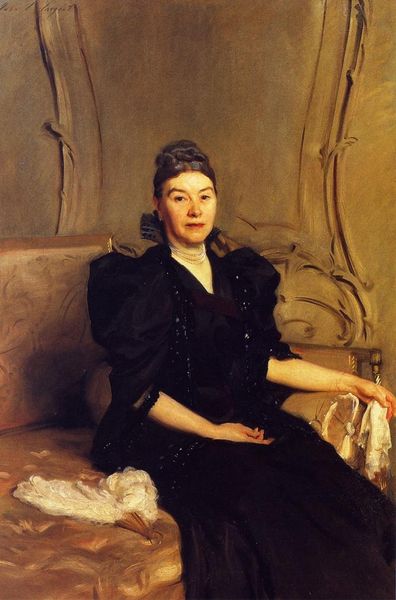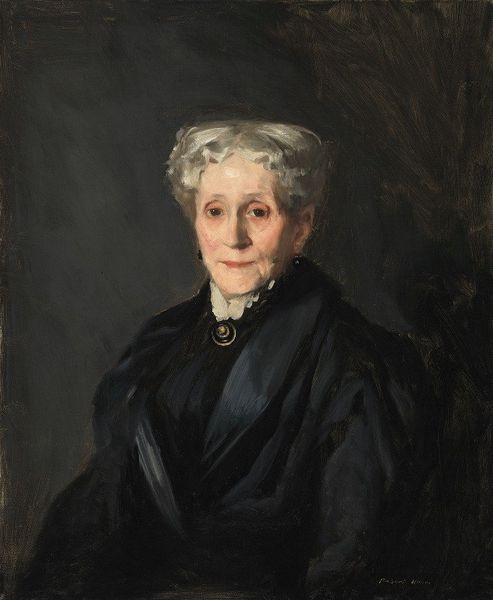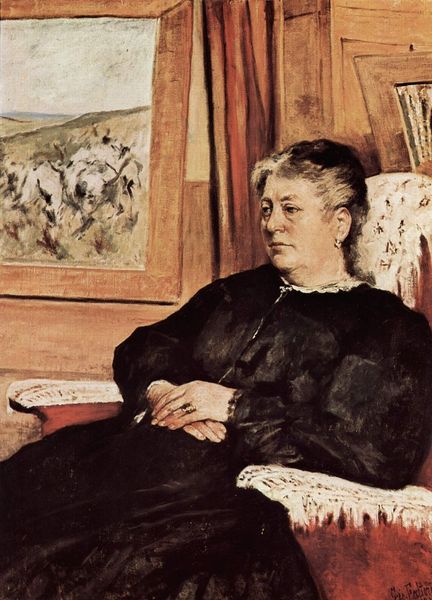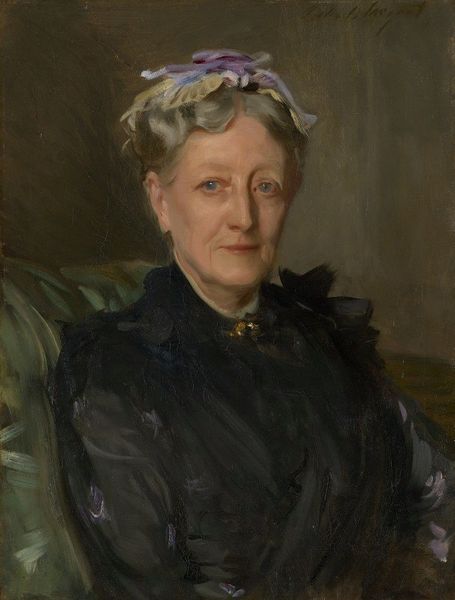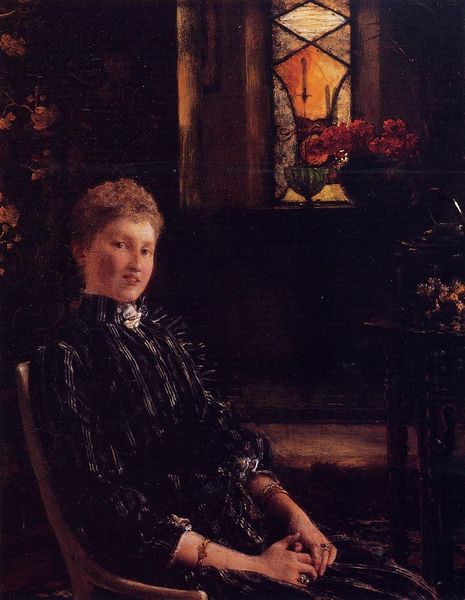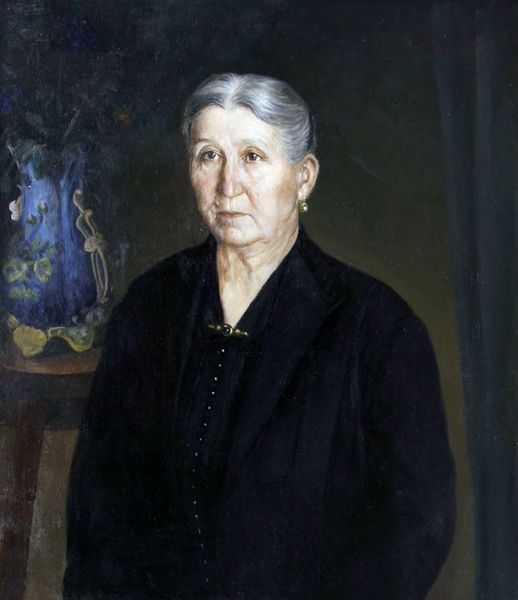
Copyright: Public domain
Curator: This is Frank Dicksee's "Portrait of a lady in a lace edged dress," painted in 1915. What's your first reaction? Editor: A quiet dignity. There's a weight of experience etched in her face, softened by the delicate lace and the warmth of the palette. Curator: Dicksee was a master of the Academic style. His portraits often depicted idealized beauty, but here, there's a sense of realism and individual character. Editor: It's intriguing how Dicksee chose to depict an older woman at a time when female portraits often focused on youth and beauty. What does that tell us about the changing societal views during World War I? Curator: The Great War certainly disrupted traditional norms. But the sitter's clothing and accessories—the lace, the jewelry—speak to a privileged class, untouched by the hardships faced by many at the time. There's an interesting tension between her serene composure and the turmoil engulfing Europe. Editor: And there's a very poised hand holding a book. Could be about class, education or leisure time for upper middle class women? How does this contrast with other roles they might have been assuming outside of this scene? What can you see of any narrative around women during this era? Curator: Indeed. The book serves as an emblem of knowledge and refinement. Considering the limited opportunities afforded to women in education and public life at that time, the painting offers a quiet celebration of intellectual pursuits within the domestic sphere. But she’s still framed within certain social expectations, even within that frame. Editor: I see that as an understated protest. She exists, but is not wholly consumed by societal restraints. Maybe a subtle suggestion of the power women can hold, even if confined? Curator: A compelling reading, particularly within the context of first-wave feminism gaining momentum. Dicksee's image might unintentionally capture a subtle tension between traditional expectations and a quiet assertion of individuality. Editor: Overall, the work allows for exploration of the lives of women, class structures and subtle resistance. Curator: It presents such a picture of contrasts that it certainly creates the chance for conversation.
Comments
No comments
Be the first to comment and join the conversation on the ultimate creative platform.
